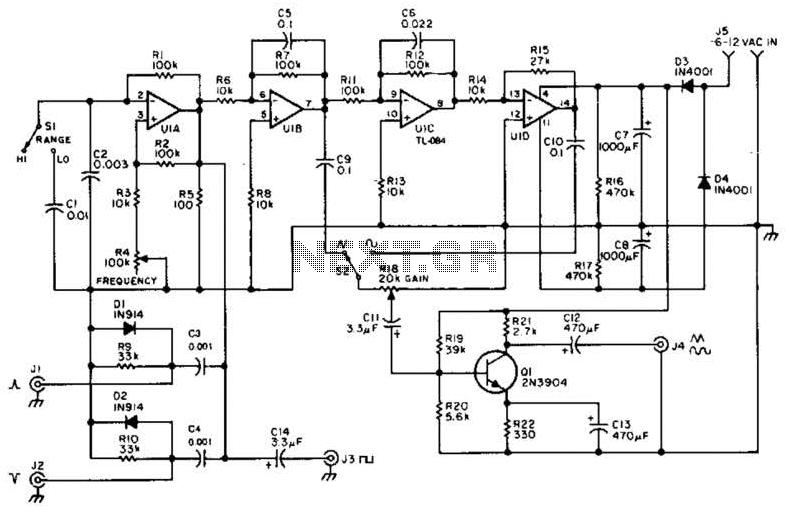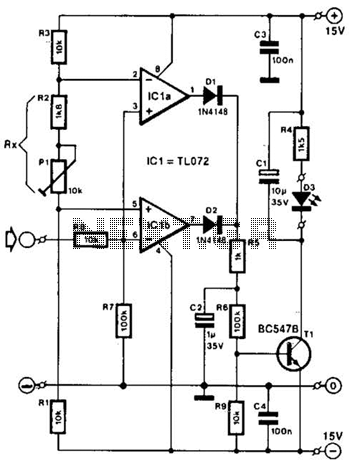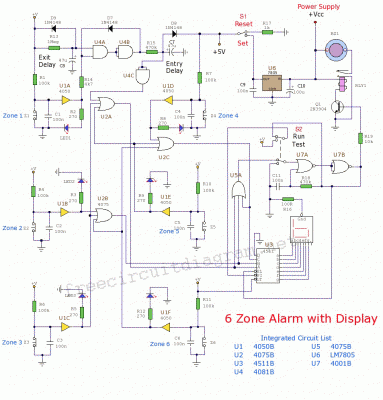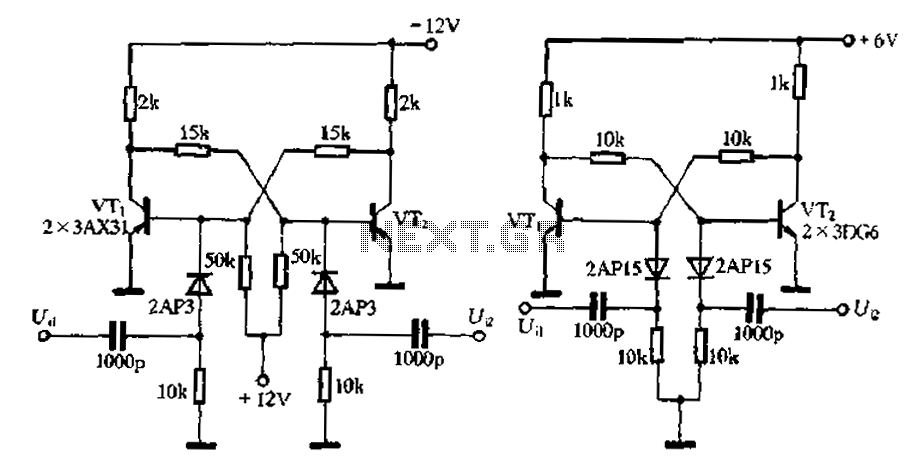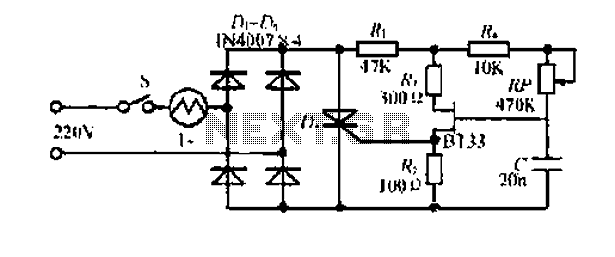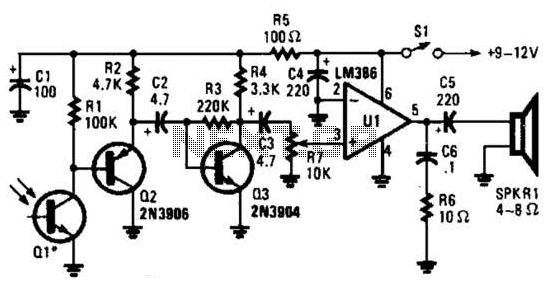
Stereo amplifier circuit with LM1877

The LM1877 is a stereo amplifier designed to deliver 2W per channel into 8-ohm loads. It is intended to operate with a minimal number of external components, making it a versatile integrated circuit suitable for various audio amplification applications, such as stereo amplifiers for record players and AM/FM radios. The LM1877 can be incorporated into circuit designs requiring a 2W stereo audio amplifier.
The LM1877 amplifier is a compact integrated circuit that provides efficient audio amplification with minimal external components, facilitating ease of integration into various electronic designs. The amplifier is capable of delivering 2 watts of power per channel, making it suitable for driving speakers with an 8-ohm impedance. The design of the LM1877 emphasizes flexibility, allowing it to be utilized in diverse applications, including but not limited to stereo amplifiers for turntables, radios, and other audio devices.
The internal architecture of the LM1877 includes features such as a differential input stage and a complementary push-pull output stage, which contribute to its high fidelity and low distortion characteristics. The amplifier can be powered by a dual power supply, typically ranging from ±4V to ±18V, which allows for a broad range of operating conditions.
To implement the LM1877 in a circuit, a few passive components are necessary, including resistors and capacitors for setting gain and frequency response, as well as bypass capacitors for power supply decoupling. The layout of the printed circuit board (PCB) should ensure that the LM1877 is adequately cooled, as it may generate heat during operation, particularly at higher output levels.
In applications where audio quality is paramount, careful selection of external components, such as input coupling capacitors and feedback resistors, can enhance performance. The LM1877 is compatible with various audio sources, making it a valuable component in DIY audio projects and commercial audio equipment alike.
Overall, the LM1877 amplifier presents an efficient and versatile solution for audio amplification needs, facilitating a seamless integration into a variety of electronic audio systems.The lm1877 is an amplifier stereo developed to supply 2W / channel in loads of 8 ohms It was drawn to work with the minimum of external components. Turning him/it a circuit integrated flexible that it can be used in several applications of audio amplification, as amplifier stereo for record player, amplifier for radios am fm stereo.
The lm1877 can be used in your drawings of circuits where it is necessary an audio amplifier of 2 w stereo. Read more: Circuit power audio stereo amplifier LM1877 – 2 Watts | Xtronic http://xtronic.org/circuit/amplifier/ciircuit-power-audio-stereo-amplifier-lm1877/#ixzz3w0aaqV5G
🔗 External reference
The LM1877 amplifier is a compact integrated circuit that provides efficient audio amplification with minimal external components, facilitating ease of integration into various electronic designs. The amplifier is capable of delivering 2 watts of power per channel, making it suitable for driving speakers with an 8-ohm impedance. The design of the LM1877 emphasizes flexibility, allowing it to be utilized in diverse applications, including but not limited to stereo amplifiers for turntables, radios, and other audio devices.
The internal architecture of the LM1877 includes features such as a differential input stage and a complementary push-pull output stage, which contribute to its high fidelity and low distortion characteristics. The amplifier can be powered by a dual power supply, typically ranging from ±4V to ±18V, which allows for a broad range of operating conditions.
To implement the LM1877 in a circuit, a few passive components are necessary, including resistors and capacitors for setting gain and frequency response, as well as bypass capacitors for power supply decoupling. The layout of the printed circuit board (PCB) should ensure that the LM1877 is adequately cooled, as it may generate heat during operation, particularly at higher output levels.
In applications where audio quality is paramount, careful selection of external components, such as input coupling capacitors and feedback resistors, can enhance performance. The LM1877 is compatible with various audio sources, making it a valuable component in DIY audio projects and commercial audio equipment alike.
Overall, the LM1877 amplifier presents an efficient and versatile solution for audio amplification needs, facilitating a seamless integration into a variety of electronic audio systems.The lm1877 is an amplifier stereo developed to supply 2W / channel in loads of 8 ohms It was drawn to work with the minimum of external components. Turning him/it a circuit integrated flexible that it can be used in several applications of audio amplification, as amplifier stereo for record player, amplifier for radios am fm stereo.
The lm1877 can be used in your drawings of circuits where it is necessary an audio amplifier of 2 w stereo. Read more: Circuit power audio stereo amplifier LM1877 – 2 Watts | Xtronic http://xtronic.org/circuit/amplifier/ciircuit-power-audio-stereo-amplifier-lm1877/#ixzz3w0aaqV5G
🔗 External reference
